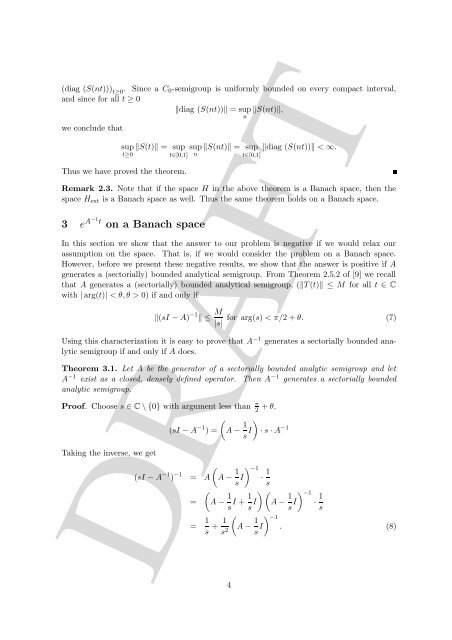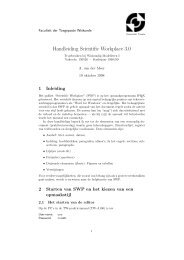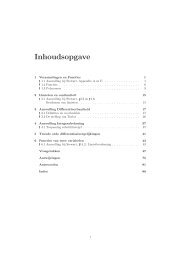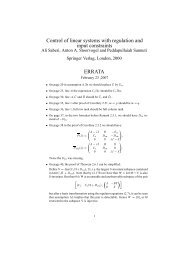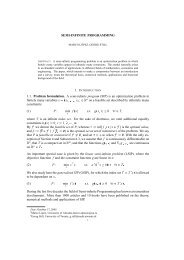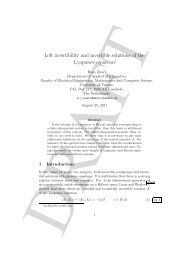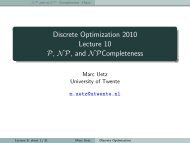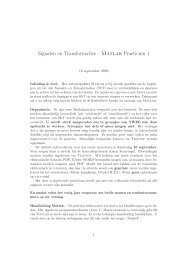Is Aâ1 an infinitesimal generator?â - Applied Mathematics
Is Aâ1 an infinitesimal generator?â - Applied Mathematics
Is Aâ1 an infinitesimal generator?â - Applied Mathematics
Create successful ePaper yourself
Turn your PDF publications into a flip-book with our unique Google optimized e-Paper software.
(diag (S(nt))) t≥0 . Since a C 0 -semigroup is uniformly bounded on every compact interval,<strong>an</strong>d since for all t ≥ 0‖diag (S(nt))‖ = sup ‖S(nt)‖,we conclude thatsup ‖S(t)‖ = sup sup ‖S(nt)‖ = sup ‖diag (S(nt))‖ < ∞.t≥0t∈[0,1]Thus we have proved the theorem.nnt∈[0,1]Remark 2.3. Note that if the space H in the above theorem is a B<strong>an</strong>ach space, then thespace H ext is a B<strong>an</strong>ach space as well. Thus the same theorem holds on a B<strong>an</strong>ach space.3 e A−1t on a B<strong>an</strong>ach spaceIn this section we show that the <strong>an</strong>swer to our problem is negative if we would relax ourassumption on the space. That is, if we would consider the problem on a B<strong>an</strong>ach space.However, before we present these negative results, we show that the <strong>an</strong>swer is positive if Agenerates a (sectorially) bounded <strong>an</strong>alytical semigroup. From Theorem 2.5.2 of [9] we recallthat A generates a (sectorially) bounded <strong>an</strong>alytical semigroup, (‖T (t)‖ ≤ M for all t ∈ Cwith | arg(t)| < θ, θ > 0) if <strong>an</strong>d only if‖(sI − A) −1 ‖ ≤ M |s|for arg(s) < π/2 + θ. (7)Using this characterization it is easy to prove that A −1 generates a sectorially bounded <strong>an</strong>alyticsemigroup if <strong>an</strong>d only if A does.Theorem 3.1. Let A be the <strong>generator</strong> of a sectorially bounded <strong>an</strong>alytic semigroup <strong>an</strong>d letA −1 exist as a closed, densely defined operator. Then A −1 generates a sectorially bounded<strong>an</strong>alytic semigroup.Proof. Choose s ∈ C \ {0} with argument less th<strong>an</strong> π 2 + θ.Taking the inverse, we get(sI − A −1 ) =(A − 1 )s I · s · A −1((sI − A −1 ) −1 = A A − 1 ) −1s I · 1s=(A − 1 s I + 1 ) (s I A − 1 ) −1s I · 1s= 1 s + 1 s 2 (A − 1 s I ) −1. (8)DRAFT4


